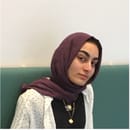Meatless Mondays. Vegetarianism. Veganism. Pledges that have little to do with eating, and more to do with the production that leads to what we see on our plate. The opening to Jonathan Safran Foer’s nonfiction book Eating Animals, published in 2009, reminds us of the greatly social aspect to meals – eating, he suggests, is rooted in family history, culture, and emotions. If anything, the opening to the book signals the unique approach the rest of his inquiry into ‘eating animals’: both empathetic towards the human relationships that underpin our relationship to food whilst still boldly exposing animal exploitation. He begins the book on a personal reflection of the way their family meals around her cooked food are closely tied to stories of his grandparents’ harrowing experiences of surviving the Jewish Holocaust during World War Two. Writing about his grandmother, Safran Foer says, “Food, for her, is not food. It is terror, dignity, gratitude, vengeance, joyfulness, humiliation, religion, history, and, of course, love.”
Safran Foer is kind to readers, as he discloses his own inconsistent relationship with vegetarianism: a tactic that encourages an honest and authentic engagement with what it means to pledge against meat. Safran Foer’s candid reflection on his own position allows for an open engagement on this topic, something that is rarely done. He depicts the tensions on consuming meat in ways that are gruesome, hopeful, and sincere.
To some extent, the rest of Eating Animals is less about ‘eating’, and more about the farming practices. Safran Foer’s extensive research into industrial farms make up much of the book but is reframed in clever and engaging ways. “Storytelling”, the first section of the book, is a theme that is intertwined throughout. “KFC buys nearly a billion chickens a year – if you packed those chickens’ body to body, they would blanket Manhattan from river to river,” Safran Foer writes. An example of the way storytelling emerges as a way of reframing statistics. Some of the more experimental pages in text do well to capture the material reality of meat eating. A third way into the book, several pages contain the repeated text “Influence/Speechlessness”. Safran Foer uses spatialised explanations through letters on pages, or chicken bodies across a state. It is explorative, material and gripping.
Eating Animals has received critical acclaim in the New Yorker, Los Angeles Times, and Washington Post. A New York Times best-seller, this book sets the tone for discussions on (animal) farming that are rigorously researched and philosophically provocative. A philosophy graduate from Princeton University himself, Jonathan Safran Foer is deliberate yet gentle in the way he plots the trajectory of the book, compelling both vegetarians and meat-eaters alike in thoughtful reflection and urgent call to address production violence. While the book’s consideration of the ‘complex’ social and cultural side to eating has been said to frustrate certain vegetarian critics – one in the New Yorker criticises the inconclusiveness – others have found the book’s entangled and brutally honest exposition on human attitudes as furthering animal rights. Natalie Portman testifies that it encouraged her to switch from a vegetarian to vegan diet. The contradictory reception reveals that the book is one that deserves to be re-read, discussed and is deeply provocative, whatever the result.


